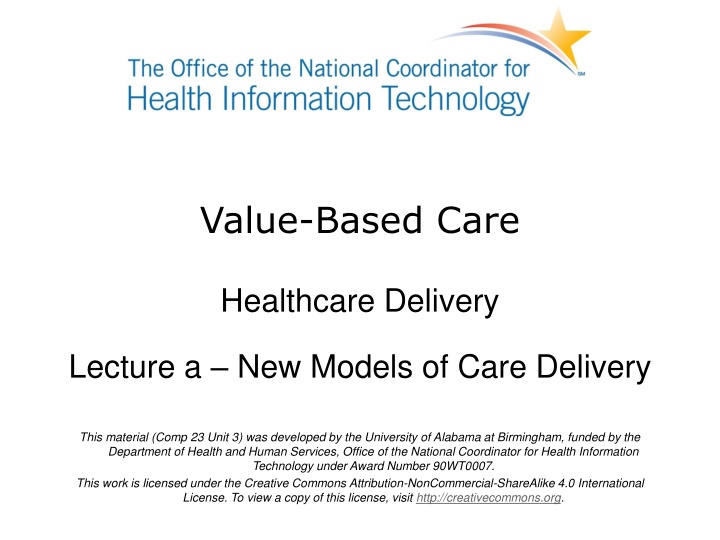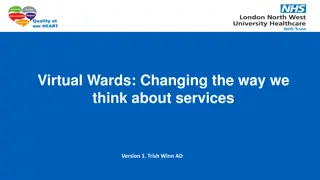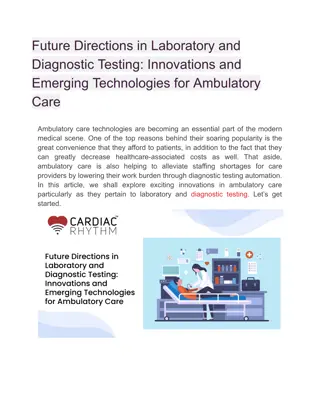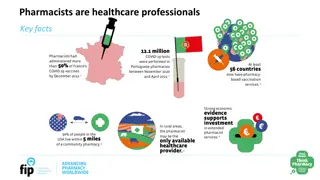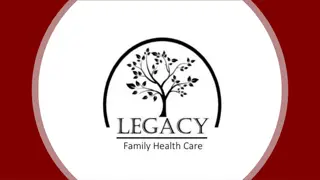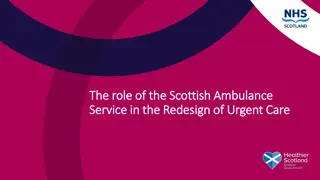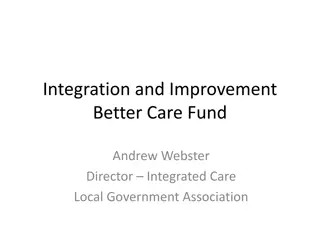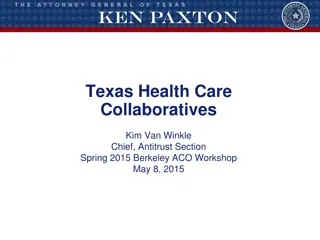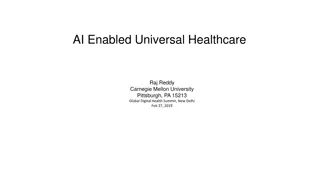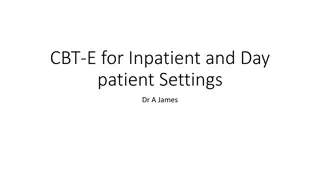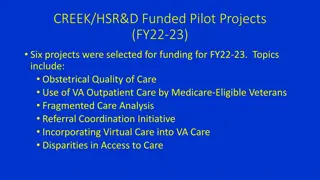Innovations in Healthcare Delivery: Transforming Care Models for Better Outcomes
Explore the evolution of care delivery in healthcare through new models emphasizing primary care, non-physician providers, and patient-centered approaches. Discover integrated systems that coordinate services for improved patient outcomes driven by factors like prevention, quality care, and patient-centeredness.
Download Presentation

Please find below an Image/Link to download the presentation.
The content on the website is provided AS IS for your information and personal use only. It may not be sold, licensed, or shared on other websites without obtaining consent from the author.If you encounter any issues during the download, it is possible that the publisher has removed the file from their server.
You are allowed to download the files provided on this website for personal or commercial use, subject to the condition that they are used lawfully. All files are the property of their respective owners.
The content on the website is provided AS IS for your information and personal use only. It may not be sold, licensed, or shared on other websites without obtaining consent from the author.
E N D
Presentation Transcript
Value-Based Care Healthcare Delivery Lecture a New Models of Care Delivery This material (Comp 23 Unit 3) was developed by the University of Alabama at Birmingham, funded by the Department of Health and Human Services, Office of the National Coordinator for Health Information Technology under Award Number 90WT0007. This work is licensed under the Creative Commons Attribution-NonCommercial-ShareAlike 4.0 International License. To view a copy of this license, visit http://creativecommons.org.
New Models of Care Delivery Learning Objectives Describe new models of care delivery Discuss the importance of primary care in value- based medicine Discuss the ways non-physician providers are used in the provision of value-based care 2
Overview Definitions New models of care delivery Examples of new models Primary care in value-based medicine Emergence of non-physician providers 3
Integrated Delivery System Systems of organizations and providers Coordinate services and work collaboratively to deliver health care services Hospitals, physician organizations, long term care facilities, home health agencies Source: (Landry and Erwin, 2015) 4
Model of Care Delivery Care providers and organizations work together to deliver care to patients Patient-Centered Medical Home Emphasis on care coordination and communication Source: (Landry and Erwin, 2015) 5
Factors Driving New Models of Care Delivery 1 Emphasis on prevention, primary care, and care coordination Coordination challenging New models needed to address challenges Source: (Kaiser Family Foundation, 2013; Landry and Erwin, 2015) 6
Factors Driving New Models of Care Delivery 2 Emphasis on patient centeredness and quality care Medicare s value-based purchasing Patient-centeredness one of six quality domains recommended by IOM Source: (Kaiser Family Foundation, 2013; Institute of Medicine, 2001; Landry and Erwin, 2015) 7
Factors Driving New Models of Care Delivery 3 Increased demand for primary care services Services focused on consumer convenience Technology facilitating consumer-driven approach Source: (Kaiser Family Foundation, 2013; Landry and Erwin, 2015) 8
New Models of Care Delivery Accountable Care Organizations Patient Centered Medical Homes Retail Clinics Telemedicine Services Health Homes Community-Based Solutions Source: (Landry and Erwin, 2015) 9
Accountable Care Organizations Groups of providers jointly responsible for the health of a particular population of patients Improvements in quality More limited results in cost savings Source: (Landry and Erwin, 2015) 10
Patient Centered Medical Homes Model emphasizes care coordination and communication Many have been effective in improving quality and reducing costs Source: (Landry and Erwin, 2015; NCQA, 2011) 11
Retail Clinics Preventive care and routine acute care Housed in pharmacies, grocery stores Fueled by demand for convenience Young adults primary consumers Growing use by senior citizens May meet demands of newly insured Source: (Landry and Erwin, 2015) 12
Telemedicine Services Primary and specialty care Remote patient monitoring Single or multiple organizations Ability to increase access to care, especially in underserved areas Efficient access to specialty consultations Source: (Landry and Erwin, 2015) 13
Health Homes Medicaid patients with chronic conditions Facilitate access to health services Utilize multidisciplinary teams Assisted by information technology Source: (Landry and Erwin, 2015) 14
Community Based Solutions Designed to keep high-risk patient populations out of institutional settings Community-based Care Transition Program Support for patients returning to community Avoid readmissions Source: (Landry and Erwin, 2015) 15
Primary Care Providers Deliver care on a routine basis Basic acute care and prevention services Family practice, pediatrics, internal medicine Nurse practitioners and midwives Other non-physician professionals including physician assistants Source: (Knickman and Kovner, 2015) 16
Primary Care Providers: An Increasingly Important Role Increased demand for primary care providers Increase in the insured population Focus on prevention Source: (Kaiser Family Foundation, 2013; Landry and Erwin, 2015) 17
Primary Care Physicians Increased number of insured Population growth Aging of the population Geographic maldistribution Increased rates of chronic illness Supply less than demand Source: (Spetz and Chapman, 2015) 18
Non-Physician Primary Care Providers Nurse practitioners and physician assistants Critical team members in new models of care Expanded roles offer potential solution Source: (Spetz and Chapman, 2015) 19
Challenges Associated with Non- Physician Primary Care Providers Scope of practice regulations States regulate Limited autonomy of non-physician providers Many nurse practitioners practice under supervision of a licensed physician Source: (Spetz and Chapman, 2015) 20
Non-Physician Primary Care Providers in the Future Regulatory reform needed Address outdated practice regulations Increase autonomy Remove regulatory barriers Source: (Spetz and Chapman, 2015) 21
New Models of Care in Practice May improve access to quality health care Effectiveness still limited Continued growth of retail clinics, telemedicine, health homes Findings not conclusive Evaluation continuing Source: (Iglehart, 2016; Landry and Erwin, 2015 ; Marwick, et al 2015) 22
Healthcare Delivery Summary Lecture a New models of care delivery Accountable Care Organizations Patient Centered Medical Homes Retail Clinics Telemedicine Services Health Homes Community-Based Solutions Roles and challenges for non-physician providers 23
Healthcare Delivery References Lecture a References Iglehart, J. K. (2016). The expansion of retail clinics Corporate titans vs. organized medicine. New England Journal of Medicine, 373(4), 301 303. Institute of Medicine. (2001). Crossing the quality chasm: A new health system for the 21st century. Washington, DC: National Academies Press. Knickman, J. R. & Kovner, A.R. (2015). Health care delivery in the United States. New York: Springer. Landry, A. Y. & Erwin, C. (2015). Organization of care. In: Knickman, J. R., & Kovner, A. R. (Eds.), Health care delivery in the United States. (183-211). New York: Springer. Marwick, L., McConnochie, K., & Wood, N. (2015). Expanding telemedicine to include primary care for the urban adult. Journal of Health Care for the Poor and Underserved, 26(3), 771-776. Patient-Centered Medical Home Recognition. (2015). Retrieved March 22, 2016, from http://www.ncqa.org/programs/recognition/practices/patient-centered-medical-home-pcmh Spetz, J, Chapman, SA. The health workforce. In: Knickman, J. R., Kovner, A.R. (Eds.), Health care delivery in the United States. (213-229). New York: Springer. Summary of the Affordable Care Act. (2013). Retrieved March 22, 2016, from http://kff.org/health- reform/fact-sheet/summary-of-the-affordable-care-act/ 24
Value-Based Care, Healthcare Delivery, New Models of Care Delivery This material was developed by The University of Alabama at Birmingham, funded by the Department of Health and Human Services, Office of the National Coordinator for Health Information Technology under Award Number 90WT0007. 25
